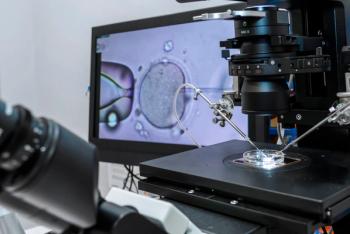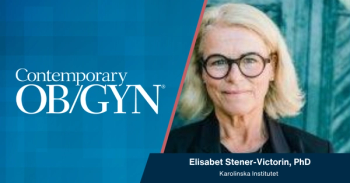
Italian Multicentre Trials of Fetal Pulse Oximetry
OBGYN.net Editorial Advisors,Hans van der Slikke, MD, PhD and Gian Carlo DiRenzo, MDProf DiRenzo also spoke to the conference on the same subject
Dr. Van der Slikke: "Gian Carlo DiRenzo, we met already in San Francisco. There you were so kind to tell us about the techniques of fetal pulse oximetry. Now we are here in Stockholm at the ISIS Conference, and tomorrow you will present some data about the Italian trial. Can you tell us about this trial?"
Dr. DiRenzo: "The aim of the Italian trial is to try to demonstrate the clinical application of this new methodology for intrapartum surveillance. It was designed as a handy criteria, the only intra-criteria was to have a suspicious, or let us say, no-reassuring CTG pattern and to utilize the possibly metritis complementary to this, lets say - ECG pattern. There was a physician in charge of the maternity board who would decide to use or not pulse oximetry on this basis. As you know, the definition of suspicion or no-reassuring tracing is quite debatable. I think that if you want to utilize a new methodology - which is apparently of a normal help in the evaluation of a fetus during labor - we have to obviously find the best intra-criteria for utilization. I think that to try to demonstrate it and in a easy to use way - is to give the possibility to any of obstetrician, any maternity, even a small maternity - that when it feels uncomfortable in the CTG pattern one can have a subsidiary methodology that helps him in the evaluation of the baby. So the intra-criteria was this, and the second evaluation was to divide the old lab result in the present stage of saturation of oxygen, which as you know from previous studies, clearly demonstrated the cut off level of 30% which is probably the best to divide - let's say, the pathological findings to the normal findings. Clearly, the results have shown that many of suspicious tracings have a normal saturation oxygen. And these, especially in a country like Italy, in which there is a normal increase of cesarean sections because of the so-called "fetal distress" (unlike babies which are usually born with a wonderful apgar scores) distress more the obstetrician than the baby - usually because the pattern of CTG is probably not well evaluated. I think that results demonstrated in these - obvious a small number - which the number of caesarian sections has decreased a lot compared to the average institute average in the particular month in which the study had been performed. That is to say, that probably the obstetrician is more confident, more assured by the result of separation of oxygen, which has led the labor to continue to the proper stage and has resulted in a safe delivery without any problem from the baby. In fact, all the results have been compared to the cord blood pH, and that was a perfect correlation between the values of the saturation of oxygen especially when it came to - more than 30 and less than 30 - compared to acidosis. I think this is the main result of our study."
Dr. Van der Slikke: "So, now you've finished your study?"
Dr. DiRenzo: "Yes, the study's finished. If the data that we're collecting is to ever be meaningful, but it's even more than that, it's an observational study and more; the objective was to have to evaluate the clinical application of this on working grounds. I think this is little step on the demonstration of these methodologies really during labor."
Dr. Van der Slikke: "What will be your next step?"
Dr. DiRenzo: "Now we try to have a smaller hospital which will use this methodology and try to apply one single protocol in many hospitals, and to try to get in one year the result also of, say not only of the outcome on the basis of few data at best, but also to have the evaluation of one weeks time when the baby, let's say - is having real fetal distress or acidosis of birth and so on, and try to compare this with the resulting labor. Secondly, we also evaluate some new legal feature of this instrumentation to see if this instrumentation is much more easy - utilized by any person in the labor from midwife to the resident and so on - and the clinical application became more easy; more I'd say, you can utilize from a clinical setting and also this instrumentation is much more easy to use."
Dr. Van der Slikke: "So there's several ways you bring it to the people, to the hospitals, to make it easier."
Dr. DiRenzo: "Yes, because we are obviously convinced that is a good methodology, and as you know in many countries, and Italy is one of these, the pH evaluation of scalp blood is practically nil and very, very few hospitals utilize the pH scalp blood for the complimentary evaluation of CTG. I think that this - let's say, no invasive methodology - can have a good application in our country."
Dr. Van der Slikke: "Then you have extensive guidelines for using this methodology?"
Dr. DiRenzo: "Yes, the guidelines have been recently published in the International Journal of Perinatal-Neonatal Medicine. We follow those guidelines which have been practically the result of more recent experience between the French, Germany, U.K., and Italy, about this; they came out the beginning of the year - I think - that can utilize a wide setting."
Dr. Van der Slikke: "Thank you very much."
Newsletter
Get the latest clinical updates, case studies, and expert commentary in obstetric and gynecologic care. Sign up now to stay informed.
















